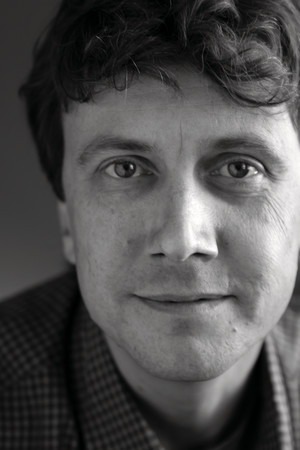In July, Autodesk acquired the experimental New York design firm The Living, led by architect David Benjamin, in order to enhance its research capabilities. This union is just one effort by the software leader to engage in wide-reaching discussions about the future of design. Last year it opened Autodesk Workshop at San Francisco’s Pier 9, a 27,000-square-foot playground for employees and partners to explore advanced manufacturing resources. And, more recently, a summer-residency program charged participants with writing science fiction. “We have an extraordinary talent base that can make stuff,” says Jeff Kowalski (left), “but we also need those folks who can will new things into existence by virtue of talking and sharing stories about them.” Kowalski, senior vice president and chief technology officer of Autodesk, is involved in each of these initiatives: “I figure out how the technical components fit together, and where they’re heading.”
 |
| Photo © TJ Rak, courtesy Autodesk |
Your career at Autodesk dates to 1993.
My 25-year-old self didn’t think I’d be there for more than two years. Then Carl [Bass, president and CEO] and I looked at AutoCAD and realized it was a pretty significant force in the world and, if applied correctly, could change the way people were doing design. We started looking at ways for the software to embody more intelligence from the designer. It was just a drawing tool at the time.
And now it’s much more than that.
What typically happens is we make a prototype, and we test it for wind loading, or energy consumption, or daylight affordances. All of these things are almost trivially analyzed inside the computer now. But if we permit the computer a more interesting role in the design process, and we change the relationship of the designer to the computer—from one of dictating everything to a conversation about goals and constraints—then we can focus on qualities that are harder to quantify, like aesthetics or comfort. I often say that I want to finally make CAD. We’ve been using that term since 1962, and I would like to get to the point where we have computer-aided design and not just computer-aided documentation.
Doesn’t parametric design move us in this direction?
Parametricism wasn’t wrong in its attempt, it was just entirely too narrow in scope and resource. The systems I’m talking about run on an infinitely elastic supply of computing out in the cloud. Because we can quickly iterate through solutions, and storage is cheap, the next time we look in the same solution area, we don’t have to reiterate the same pathways.
You’re not just envisioning the next version of AutoCAD or Revit, then?
One role of designers is to improve upon something that already exists. There’s no reason I should have to dictate to the computer the existing form or context—it should know it. Unfortunately, we’ve forced designers to reiterate those objects and environments, instead of turning the eye of the computer to the world and teaching it what we’re seeing.
Then the cloud kicks in?
Instead of creating a form that the computer analyzes according to your criteria, as we do today, you would describe your criteria, and the computer would generate ideas and evaluate them. The computer would then present representative solutions, and you can dive further into these archetypes, change criteria, and add connections. We move from design as a process of dictating to one of discovery.
Autodesk is also investing in advanced manufacturing, right?
Autodesk has invested very heavily in novel forms of fabrication. We find additive manufacturing and robots to be attractive; we also think about life sciences, in which you leverage processes and materials in the living world to enact the designs that we’ve chosen using astute computing capability. Ultimately, the audacious goal is to take some of the rationalizing and adaptive power in the computer and the design process and embody it in the object.
This recalls the cornstalk-mycelium masonry that David Benjamin devised for this summer’s installation at MoMA PS1 in Queens, New York.
David and I think alike. Acquiring The Living is one case where I’ve violated my own principle of letting my influencers operate from their locale instead of glomming them into a self-contained organization. But the things he’s driving toward match the stuff we’re driving toward. I’m a computer scientist. I cannot build things; I can’t really design things; I don’t have the same pattern of thinking that David does. We want to show that output to the world.

Post a comment to this article
Report Abusive Comment